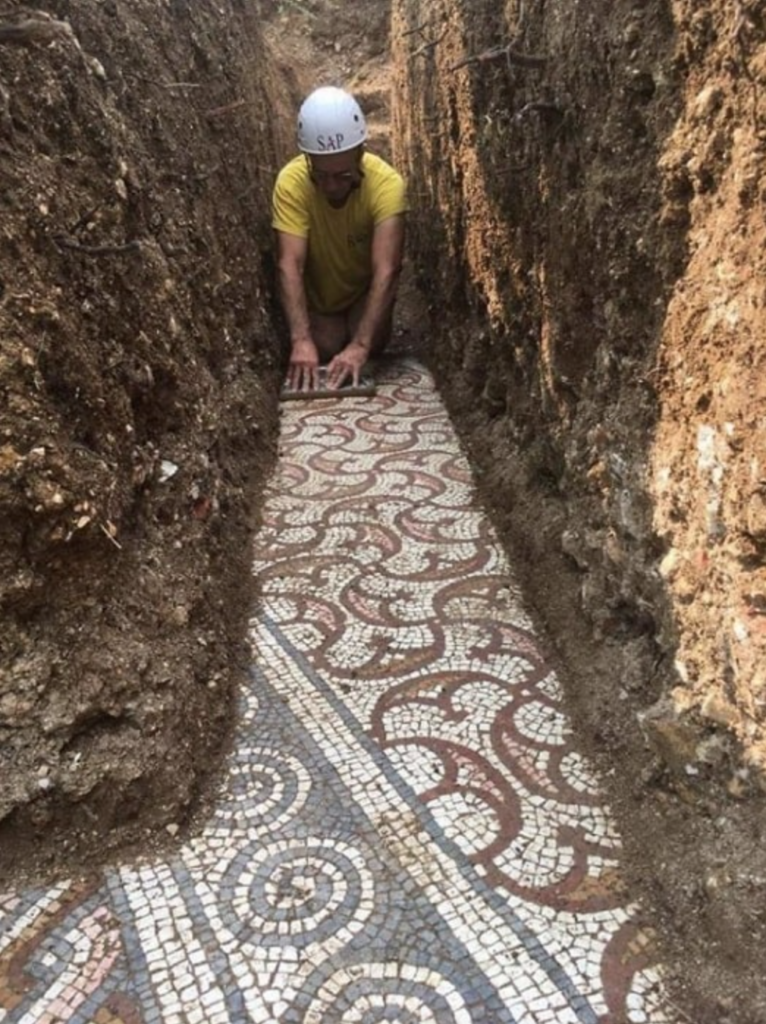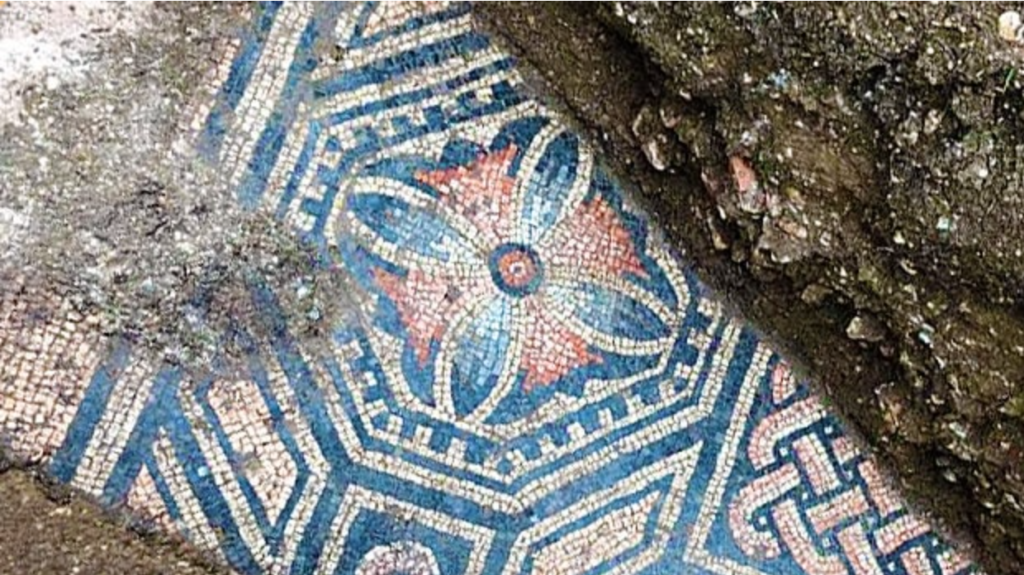Archaeologists have been working on discovering the remains of a historic Italian mansion for nearly a century.
They dug for years and finally uncovered their prize: a stunning Roman mosaic buried beneath a farm in the hills above Negrar di Valpolicella in northeastern Italy.

The intricately carved floor is believed to originate from the same villa that was discovered all those years ago. The mosaic is made up of numerous geometric shapes and tesserae of marble and glass that have been meticulously put to create geometric patterns. Numerous patches have been made to the floor, as shown by the multiple layers of mortar beneath the colorful mosaic.Both archaeologists and the locals can benefit from this discovery. The mosaic will serve as both a window into the past and present of this area of Italy and a symbol of the power of sticking with a project until it’s finished. It’s a rare find, and hopefully it will inspire future generations to keep digging for more.

The beautiful mosaic floor, dated to the third century AD, is the subject of intense study as scientists determine the most effective and risk-free approach to excavating it.This Roman mosaic was unearthed near Verona, Italy, on a farm more than a century ago, and it is of great historical significance. As a result of this discovery, they were able to unearth remnants of the ground and the foundation of the Roman villa, providing them with a window into the past.They will be able to carefully excavate the location without ruining the intricate design. By doing so, we can gain invaluable insight into the customs and practices of our ancestors and better understand their way of life in the distant past.In addition, it could reveal significant details about their competence and creativity. Insights into this fascinating era can be gained through further investigation.

This past summer, the team led by Verona’s Superintendent of Archaeology, Fine Arts, and Landscape began a new dig at the site, which had been dormant since 1922.Very quickly after they had begun looking, they discovered an intriguing artifact that had eluded them for nearly a century. Myko Clelland, an archaeologist who discovered the discovery online, tweeted about it, and the news quickly went viral, generating a lot of attention.Now, the Superintendence must work with the landowners and the local government to figure out how best to showcase this archaeological find to tourists.

Time and money are required for such an endeavor, and the status of the process must be closely watched at all times. If this previously hidden piece of history is made available to everyone, then people will be able to learn more about this distinctive culture and appreciate it in its appropriate context. Please SHARE this amazing discovery with your Family and Friends!

